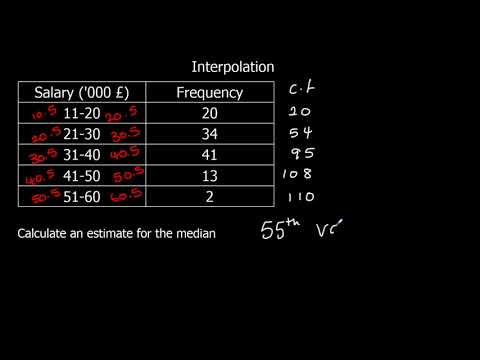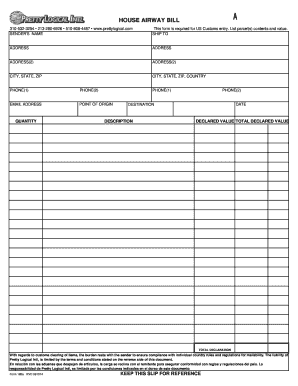
At the same time, some racial groups disproportionally work jobs that cannot be done from home leading to higher risks of exposure to the COVID-19. Socially disadvantaged groups are more likely to have worse health outcomes compared to those experienced among more affluent populations groups (Antipova, 2020b). Minorities and lower-income groups often live in multiunit structures and in multigenerational households and have fewer options for protecting both their health and economic well-being (Gould and Wilson, 2020). Overall, socioeconomic attributes strongly impact life outcomes including jobs and health even in good times and under normal circumstances. Recent studies on the impact of COVID-19 on the labor market note that the most vulnerable segments of the active population including lower wage workers, those working in poor working conditions, women and young workers may be impacted the greatest (Radulescu et al., 2021).
In many ways, we’re still making up for the damage caused by the Great Recession that stretched from the early 2000s to the early 2010s — and the decades of wage stagnation that preceded it. Productivity can also take a hit if employers aren’t offering competitive wages in the midst of the tight labor market. This inevitably results in hiring teams filling vacancies with less-qualified candidates. One explanation is that these individuals think they’re unqualified for the jobs that are available.
Does unemployment mess up your taxes?
However, we did find a significant variation in unemployment during the subsequent stages of the recession. Once economic activities began to resume, though on a limited basis across counties, it happened on a much smaller scale in communities with high social disadvantage. In communities with a low social disadvantage, joblessness is significantly lower than in vulnerable communities. Specifically, we analyze unemployment outcomes in a context of a multi-dimensional social disadvantage that continues to play out during the ongoing public health crisis. Study identifies communities by social disadvantage status captured by several key metrics and examines the geographic distribution of labor underutilization across communities by social disadvantage status.
- We focus on the diversity of labor market outcomes following an initial spell of unemployment and model differences in the labor force status outcomes across gender and age groups through a series of hybrid panel models [26].
- Apart from the social unrest and disgruntlement that unemployment can produce in the electorate, high unemployment can have a self-perpetuating negative impact on businesses and the country’s economic health.
- In an ideal world, an economy has no slack, meaning the economy is at full capacity and there is no output gap.
- Furthermore, existing studies have revealed that unemployment effects vary depending on age, gender and economic fluctuations [10, 16] and that much of the size and endurance of these effects is shaped by the social context and subjective perceptions around unemployment [17–19].
- To the best of our knowledge, our study is one of the few [23, 24] attempting to quantify CAD processes following unemployment over one’s careers and across different socio-demographic groups.
The unemployment accumulates as recession progresses into Summer and becomes significantly different between the two types of communities by social disadvantage with partial economic recovery. Areas with high social disadvantage, already vulnerable are additionally burdened with a higher unemployment and inability to resume economic activity. We conclude that the true average of unemployment for the various exposure to social disadvantage is different and is greater for socially higher disadvantaged areas than for low disadvantaged areas. Fig 4B shows that, similar to men, women of all different age groups experience an initial recovery in the career quality immediately after unemployment.
Understanding the effects of low unemployment rates: What business leaders should know
This ratio represents the percentage of people in the labor force without jobs who’ve been actively looking for work within a four-week period. Many people believe that it’s a good indication of the economy’s overall strength. But others recognize that it has its flaws, as it can miss areas of the market entirely. Financial distress is often one of the biggest disadvantages of unemployment, even if you’re out of work for only a short time. Although unemployment benefits or a severance package might soften the blow, neither is a long-term solution. In addition, you’ll still be responsible for paying income tax and child support obligations from these amounts.
Structural Unemployment: Definition, Causes, and Examples – Investopedia
Structural Unemployment: Definition, Causes, and Examples.
Posted: Fri, 06 Jan 2023 08:00:00 GMT [source]
Our study addresses this gap by studying the career scarring attached to unemployment and how this varies across gender and age groups. Our study contributes to this limitation by means of an innovative measure that allows us to investigate the combined effect of all unemployment dimensions on the rate of career quality following initial unemployment. Finally, most of previous research has used relatively short observation periods, which provide a limited view about recovery processes. Our study, instead, takes advantage of the long observation periods in the GSOEP data to track up to almost 23 years of a worker’s career to provide more accurate estimates about the rate of career recovery after unemployment. Age, racial minority, and worker education level, age, industry sector type are more persisting than others. The younger, less educated, minority workers tend to have a limited access to credit and the informal resources (Bartik et al., 2020).
The Themes Of Alienation In Estranged Labor By Karl Marx
Even the nonpartisan Congressional Budget Office expects the weak labor market to last for years. Over the same time period, the median white household saw its wealth rise from about two years’ worth of income to about three years’ worth. As the expiration date for benefits got closer, Kocak said, workers eventually came back. Deniz Kocak runs Turkuaz restaurant in the Midtown West area of Manhattan. As restaurants reopened there last month, she started calling her staff back to work, and some said no. They told her that unemployment was paying them more than what she would.
Accordingly, we developed an approach to identify communities with high social disadvantage captured by several key metrics (described below in Identification of Socially Disadvantaged Areas section). We applied it in this study of unemployment in Tennessee as a test case. TN is part of the southeastern United States which is both rural and socially vulnerable (Drakes et al., 2021). Many factors contribute to that divide, including racial discrimination and access to educational opportunities. Studies have consistently found evidence of discrimination against black job applicants.
Unemployment may lead to higher payments from state and federal governments for unemployment benefits, food assistance, and Medicaid. When a person loses their job, there is often an immediate impact on their standard of living. Before the Great Recession, the average savings rate in the U.S. had been drifting down toward zero (and sometimes below). There are anecdotal reports that the average person is only a few weeks away from serious financial trouble without a paying job.
How Does Retirement Affect People?→
In this section, we describe the hypotheses tested and the analyses undertaken to understand the distribution of the job losses across counties. Our study addresses these gaps by focusing on the level of career quality and the speed of recovery following an initial spell of unemployment. The advantage of this newly developed measure is that it captures the volatility of labor force trajectories and their evolution since the occurrence of an initial unemployment spell.

In this study, we used detailed employment data from the GSOEP over the period 1984–2005 to investigate how career quality evolves over time after the occurrence of a first unemployment experience in Germany. We focused on Germany because of its relative generosity in the unemployment benefit institutions that are thought to shield people from the negative effects of unemployment. We paid careful attention to gender differences and timing of first unemployment.
Using a sample of young men from the National Longitudinal Survey of Labor Market Experience Youth Study (NLSY) 1979–1987, he demonstrates that the duration of previous unemployment lengthens the expected duration of unemployment. According to Omori [16], this relationship is stronger and greater during economic upturns because signaling effects attached to stigma around unemployment emerge when proportionately fewer are unemployed. More recently, Torgovitsky [30] finds that unemployment accounts for at least 30–40% of the four-month persistence in unemployment among high school educated men. Scholars have long been interested in the role that unemployment plays for workers’ labor market outcomes and achievements. We know much about the negative consequences of unemployment on re-employment chances [1–5] and the imposed wage penalties [6–11]. We also know that negative effects attached to unemployment spread to the next generation impacting negatively on children’s educational achievements and their employment outcomes [12–15].
Some states will allow you to file a claim over the phone or online, other states make you file a claim in person. Make sure to have your contact information, like your social security number and information about your former employer on hand. With most jobs, employees don’t have to worry about taxes being withheld because their employer handles this for them. However, federal tax laws do not require state unemployment agencies to withhold taxes from your unemployment check. It is your responsibility to ensure that your taxes are properly paid from your unemployment check. Failure to do so will likely result in a large tax bill, and without consistent pay, this could be impossible to pay.

Hispanics also experienced a steeper increase of 13.7% from February when their unemployment rate was just 5.2%. Racial and ethnic minorities continued having high unemployment rates in October 2020 with Black workers’ unemployment of 10.8% compared with 6% and 7.6% among White and Asian workers, respectively (Falk et al., 2020). Interestingly, a peak unemployment rate occurred at different times for White, Black, and Asian workers, with White workers experiencing an earlier peak unemployment rate in April (at 14.2%), and it peaked for Black and Asian workers later on in May (at 14.5 and 16.7%, respectively). In October 2020, the gaps have narrowed down as an unemployment rate among Hispanic workers was at 8.5%, compared to 6.2% for non-Hispanics. Even under normal circumstances, less educated workers have higher unemployment rates.
Chapter 3: Poverty as a Challenge
Overall, while unemployment state dependence has been an active area of research, several issues remain not fully assessed. First, the majority of early research on scarring has focused on male workers, lacking emphasis on the effects list down the disadvantages of unemployment of unemployment for women’s careers. Although a growing number of studies are including women into their analyses, they have been limited to women’s wages or earnings profiles and less on their career outcomes following unemployment.
The first section, the Introduction, introduces the topic and explains the significance of the study, and reviews the recent studies on the employment impacts of the COVID-19-caused current recession, discusses the drivers of unemployment, and presents the study area. Some communities can absorb the impact of economic downturns due to more favorable economic and social factors protecting residents from adversity, yet other communities are witnessing the effect of rising unemployment in the time of COVID-19. Further, the link was found between incidence of the virus in the preceding month and employment.







